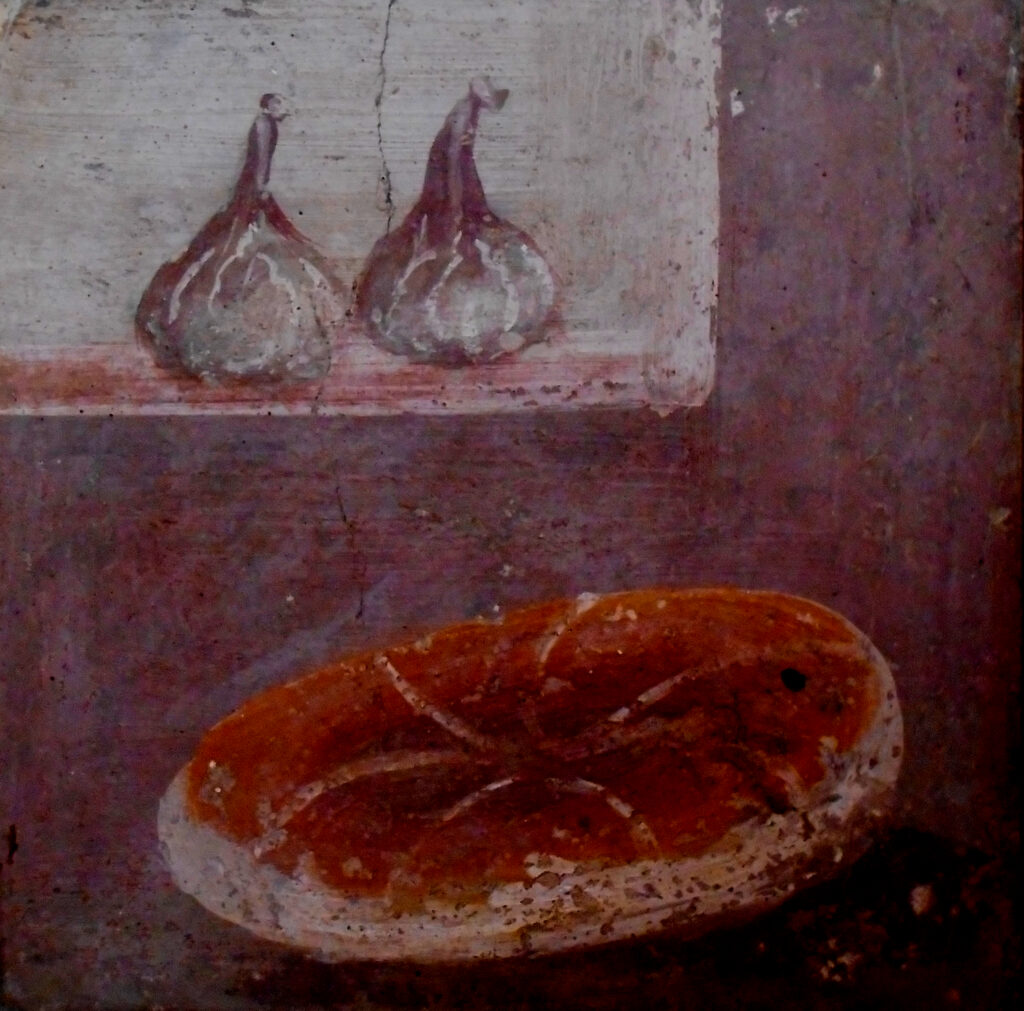Thanks to archaeology and chemistry research, you can make sourdough bread just like the Romans did. Here’s what you need to know.

In AD 79, a baker prepared a loaf in the Roman city of Pompeii. He stamped it with his name — ‘Property of Celer, Slave of Q. Granius Verus’, the loaf reads — and split it into eight pieces. Sadly for him, both he and the bread were subjected to a much higher temperature than expected when Mount Vesuvius violently erupted, burying the city of Pompeii with virtually all its inhabitants.
However, the bread was excellently preserved. Some 2,000 years later, archaeologists found it and put it in a museum in Napoli, from where it was borrowed by the British Museum for a temporary exhibition. There, researchers worked with Giorgio Locatelli, an Italian chef working in the United Kingdom, to backtrace the recipe. As it turns out, there’s nothing particularly exotic about it and you could recreate the recipe today without that much hassle.
Here’s the recipe for the Roman bread:
Ingredients
- 400g biga acida (sourdough)
- 12g yeast
- 18g gluten
- 24g salt
- 532g water
- 405g spelt flour
- 405g wholemeal flour
Details
Sourdough bread features a fermented batter-like dough starter to make them rise more and enhance its flavour. The dough is fermented using naturally occurring lactobacilli and yeast and it has a mildly sour taste due to the fermentation. The advantage of it is that it naturally keeps longer (and some people prefer the taste).
Of course, it’s hard to say that this is exactly the Roman recipe or exactly the Roman method, but it’s pretty damn close, and the results won’t be that different from what the Romans did. There are two ways you can go about making the bread.
Method #1 — easy mode
You melt the yeast in the water as you would in any bread and you add it to the biga. Mix and sieve the flours together with the gluten and add the mixture to the water, continuing to mix until homogenous. After this, add the salt and keep mixing for three minutes. By now, you should have a pretty nice mix — make a round shape like this one and leave it to rest for an hour.

After an hour, it should start taking shape — there are a few things you could do to improve the aesthetics of the upcoming bread (though this is not mandatory). Put some string around it to give it a distinctive round shape and make the cuts on top. We don’t know why the cuts were there, but perhaps it was easier to split or sell by the slice. Then, put it in the oven at 200 degrees for 30–45 minutes and voila!
Thankfully, bread-making techniques have evolved significantly since Roman times and modern breadmakers enable anyone, with very little effort, to enjoy the smell and taste of freshly baked bread from the comfort of their own home.
This is the simple way of baking Roman bread — but if you want to go the extra mile, there’s another way you can go about it.
Method #2 — the real artisanal bread
As the writers at The Fresh Loaf point out, this doesn’t feel like artisanal bread. It features modern gluten and yeast, which the Romans, of course, wouldn’t have used. So they took out the modern flour, yeast, and gluten additive and replaced them with a sourdough preferment, ancient flours, and artisanal techniques to develop gluten. They used Kamut, rye, and spelt flour, which were common in the Roman world. The technique they used gets pretty complex (and a bit more expensive), so I recommend checking it out on their page — at the very least, it should make for interesting reading.
I’d only recommend it if you have a lot of baking experience and want to take things to the next level. Be sure to have a stamp to mark your bread!
If this feels like too big a task, then the first method should make for an excellent (and delicious) experiment. It’s something to get the dinner conversations rolling.
Roman baking
If you find this interesting and would like to explore the subject even further, research has revealed quite a bit about Roman baking. If you want to bake even more Roman goodies, there are a few recipes you can try out.
Baking flourished in the Roman Empire from as early as 300 BC. In 168 BC, the first Bakers Guild was formed as bread turned from a luxury to a common good. Within 150 years there were more than three hundred specialist pastry chefs in Rome.
The best bakers were trained at the Collegium Pistorum and did not allow the bakers or their children to withdraw from it and take up other trades.
In the ruins of Pompeii, archaeologists have found dozens of bakeries, as well as communal ovens to which you could bring your dough (bread-stamped, of course) to be baked overnight. Rather ironically, many of the ovens were made from volcanic rock. Eighty charred loaves alone were recovered from the ovens of one baker, Modestus. Sometimes, the Romans would add milk, eggs and butter to their bread — but this was a privilege only the rich could afford.
There was also oyster bread (to be eaten with oysters); ‘artolaganus’ or cakebread; ‘speusticus’ or ‘hurry bread’, tin bread, Parthian bread and the Roman Style Slipper Loaf. All in all, the Romans had quite a rich tradition, and a large part of that can be recreated with modern methods.


